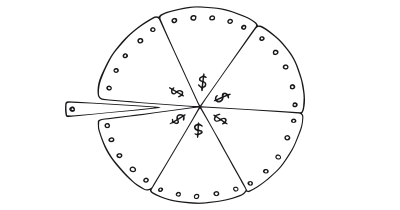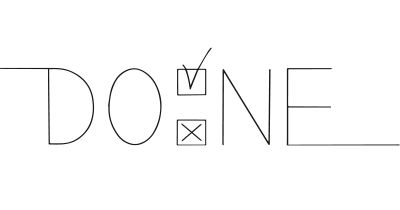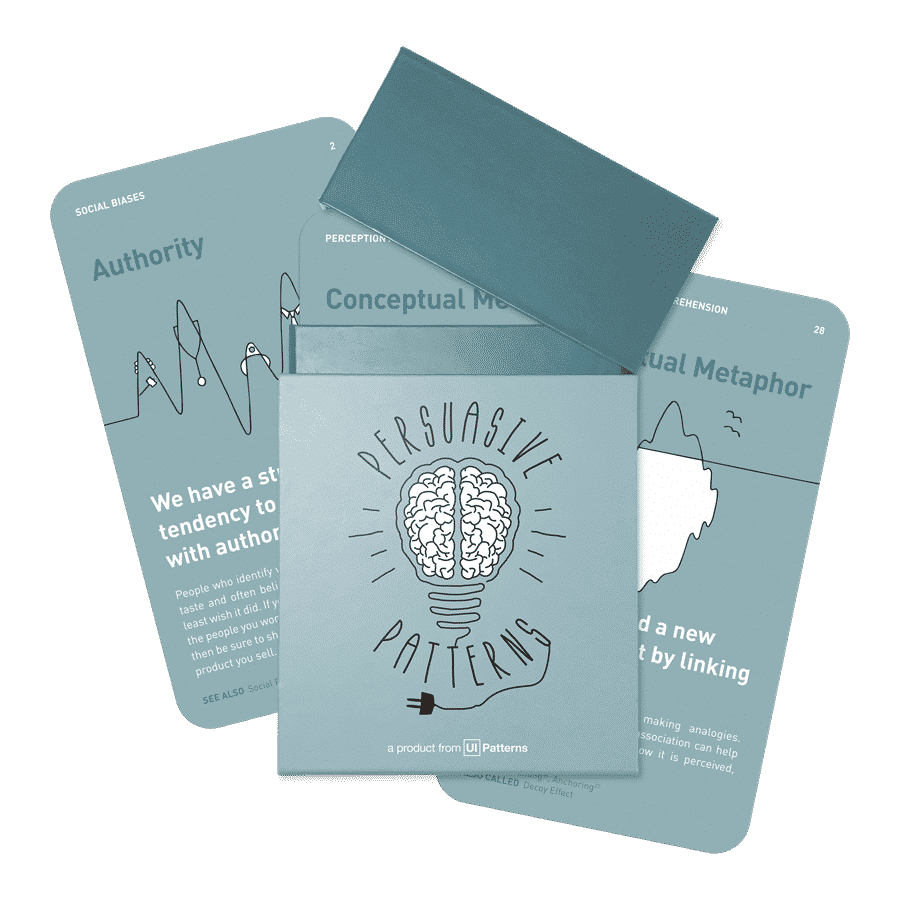Persuasive Technique
This persuasive pattern is part of the Persuasive Patterns printed card deck.
The Persuasive Patterns Card Deck is a collection of 60 design patterns driven by psychology, presented in a manner easily referenced and used as a brainstorming tool.
Get your deck!By strategically implementing recurring events or activities within a system, designers can build up anticipation, enhance user engagement, and foster a sense of community and loyalty among users. When events recur at regular intervals, such as daily, weekly, or monthly, a predictable and engaging rhythm for user interaction is created.
In a local community center, a monthly book club is organized. Each month, a new book is selected, and members gather to discuss their thoughts and insights. This periodic event creates a sense of anticipation among the members as they look forward to discovering each new book and sharing their experiences. The regularity of the event fosters a sense of belonging among the members, as they meet consistently and bond over shared interests. Over time, this sustained interest keeps the book club thriving, with members eagerly awaiting each meeting.
Consider a digital product like a language learning app that uses a similar approach. The app introduces a “Word of the Day” feature, where each day, users are presented with a new word to learn. This feature creates a sense of anticipation as users look forward to discovering a new word daily. As users engage with the app and share their progress on social media, a community forms around the shared experience of learning. This sense of belonging is further enhanced by in-app forums where users discuss their learning journeys. The periodic nature of the “Word of the Day” feature maintains user interest over time, encouraging consistent engagement with the app.
The study
The study “On Positive Psychology of Events” by Filep, Volić, and Son (2015) is important in understanding how events can be structured to enhance psychological well-being and create positive experiences for participants.
The study focuses on how events, ranging from small gatherings to large-scale festivals, can be designed to maximize positive emotional experiences, engagement, relationships, meaning, and accomplishments – the five core elements of well-being as identified in positive psychology. The researchers argue that events are unique opportunities to foster these elements, thereby contributing significantly to the overall happiness and satisfaction of individuals.
One of the key findings of this study is the emphasis on the role of engagement and meaningful experiences in events. The researchers found that when participants are actively engaged and find personal significance in the event, their level of satisfaction and overall well-being significantly increases. This insight is crucial for designers as it suggests that creating interactive and personally relevant experiences can have a profound impact on the success of an event.
Furthermore, the study highlights the importance of social connections and relationships in enhancing the event experience. Events that facilitate positive interactions and foster a sense of community contribute to the well-being of participants by fulfilling their need for social connection.
Filep, S., Volić, I., & Son, I. (2015). On Positive Psychology of Events. Event Management, 19, 495-507.
This pattern taps into the human tendency to find comfort in routine and anticipation in recurring events. By integrating this pattern into a system, designers can effectively increase user engagement, reinforce brand loyalty, and maintain a sustained level of interest. Periodic Events can take various forms, such as weekly challenges, monthly webinars, daily quizzes, or regular community meetups.
This pattern leverages the human inclination towards habit formation and predictability. As creatures of routine, individuals find comfort in the predictability that regular events provide, reducing cognitive strain and fostering a sense of control. This aspect of human behavior is closely linked to theories in cognitive psychology that emphasize the importance of routine in mental processing and habit formation (Lally, P., & Gardner, B. (2013). Promoting habit formation. Health psychology review, 7(sup1), S137-S158).
Additionally, the anticipation associated with periodic events triggers dopamine release, a phenomenon deeply studied in neuroscience and psychology. The anticipation of a rewarding experience, as much as the experience itself, stimulates the brain’s reward pathways, enhancing user engagement (Berridge, K. C., & Robinson, T. E. (1998). What is the role of dopamine in reward: hedonic impact, reward learning, or incentive salience? Brain research reviews, 28(3), 309-369).
From a social psychology perspective, periodic events effectively build and reinforce community and social identity. Social Identity Theory explains how individuals derive a sense of belonging and identity from their affiliations with groups. Regular communal events create shared experiences, strengthening these group identities (Tajfel, H., & Turner, J. C. (1979). An integrative theory of intergroup conflict. In The social psychology of intergroup relations (pp. 33-47). Brooks/Cole Publishing Company).
The concept of Escalation of Commitment, another psychological principle, suggests that people are more likely to continue with an activity in which they have already invested time, effort, or money. Periodic events capitalize on this by creating a sense of ongoing investment and involvement, encouraging continued participation (Staw, B. M. (1976). Knee-deep in the big muddy: A study of escalating commitment to a chosen course of action. Organizational behavior and human performance, 16(1), 27-44).
Drawing from the Zeigarnik Effect, periodic events create a series of ‘open loops’ or unfinished tasks that keep users engaged as they anticipate the next installment. This phenomenon underscores the human tendency to better remember tasks or events that are not yet completed (Zeigarnik, B. (1927). On finished and unfinished tasks. In A sourcebook of Gestalt psychology (pp. 300-314). Routledge).
Finally, the theory of Conditioned Response, derived from classical conditioning, is at play in these patterns. Regular events can condition users to associate specific times or dates with particular actions or emotions, creating a learned response over time (Pavlov, I. P. (1927). Conditioned reflexes. Oxford: Oxford University Press).
These theories collectively emphasize the importance of routine, anticipation, social identity, commitment, memory, and conditioning in shaping user behavior.
Designing products through Periodic Events
Incorporating periodic events into product design can significantly enhance user engagement and loyalty. These events, when strategically implemented, create a sense of anticipation, belonging, and sustained interest. Here are some tips and tricks for effectively applying this pattern:
Determine the most effective frequency for your periodic events. This could be daily, weekly, monthly, or even seasonally. The key is to align these events with the natural usage patterns of your audience. For instance, a fitness app might introduce weekly challenges, while a shopping app could feature monthly sales events.
By establishing a regular schedule for events (e.g., every Monday or the first day of each month) you will help users incorporate them into their routines. By regularly informing users about upcoming events and what they can expect you will help reduce uncertainty and mental stress.
Use familiar formats for periodic events so users know what to expect, enhancing comfort and reducing anxiety. Ensure that your periodic events offer real value to users. This could be in the form of exclusive content, special offers, or unique experiences. The event should feel like a reward or a beneficial opportunity, not just a marketing ploy.
Prior to an event, provide teasers or previews to create buzz and anticipation. Offer exclusive content or deals during these events to make them more appealing and unique. Use countdowns to build excitement as the event approaches.
Send reminders or notifications that align with the user’s schedule and preferences, making it easier for them to engage with the event and enable users to share their experiences or achievements during the event. Consider incorporating features in your product that allow users to discuss, participate, and share experiences related to the events.
Periodic events can be used to build a community among your users. Encourage interaction, sharing, and discussion around these events. For instance, a gaming app could host monthly tournaments that allow players to interact and compete.
Recurring events like ‘Throwback Thursdays’ or ‘Wellness Wednesdays’ that users can look forward to can help foster a sense of belonging. For example, a fitness app could create community challenges where users work together to achieve a common goal.
Weave a compelling story around the periodic events. For instance, a narrative about personal growth and achievements in a fitness app can motivate users. Provide glimpses into what future events might hold, linking them together with a common theme or story.
Using periodic events as triggers for behavior
Routine and habit formation: Regular, scheduled events tap into the human tendency for habit formation. When an action is repeatedly performed in a specific context (like a time or place), it becomes a habit. Periodic events provide this consistent context. For example, a fitness app that prompts users for a weekly check-in can gradually turn fitness tracking into a habit.
- Anticipation and reward
Anticipation of a future event can create a sense of excitement and expectancy. This feeling is often linked with the release of dopamine in the brain, which plays a key role in motivating behavior. For instance, an online store announcing a monthly special offer creates anticipation, encouraging users to visit the store regularly. - Social synchronization and belonging
Humans have an innate desire to belong and connect with others. Periodic events that involve community participation can satisfy this need, reinforcing social bonds and shared experiences. For example – a gaming platform hosting monthly online tournaments can foster a sense of community among players. - Anchoring in time
Periodic events serve as time anchors, providing structure in the otherwise continuous flow of time. This helps in mentally organizing activities, making it easier to remember and participate in these events. An example could be regular webinars or workshops can be an effective way for educational platforms to keep learners engaged. - Goal setting and progress tracking
The regularity of periodic events can aid in goal setting and tracking progress. The closure of one event and the anticipation of the next create natural milestones for assessing progress. Apps focused on personal finance could use monthly financial health check-ins to help users track and manage their spending and saving goals. - Reducing procrastination
The fixed schedule of periodic events can counteract procrastination by creating a sense of urgency. The knowledge that an event is approaching can motivate action to prepare or participate. An example could be online courses that release new content weekly and thus encourage continuous engagement and reduce the likelihood of students putting off their studies.
Examples of Periodic Events in digital products
Digital products often utilize periodic events to enhance user engagement, loyalty, and interaction. These events, structured around different time frames, cater to various user needs and interests. Here’s how these events are typically grouped:
Daily events
- Daily tasks and reminders
Apps like habit trackers or productivity tools often set up daily reminders for tasks, helping users stay on track with their goals. - Daily learning or exercise sessions
Educational and fitness apps may offer daily lessons or workout routines, encouraging consistent daily engagement.
Weekly events
- Weekly challenges
Fitness trackers or learning platforms often use weekly challenges to maintain user engagement, offering new goals each week. - Weekly expert blogs or podcasts
Regular content such as blogs or podcasts, released weekly, keep users returning for new insights, solidifying the brand’s authority. - Weekly introductory webinars
Many services host weekly webinars for new users, aiding in onboarding and community integration. - Weekly product updates
Tech and software companies might release weekly updates or feature highlights to keep users informed and engaged.
Monthly events
- Monthly report cards
Financial apps or health trackers provide monthly summaries of progress or activities, offering insights and reinforcing progress. - Monthly goals and rewards
Setting goals for users with rewards upon completion each month can motivate continued engagement. - Monthly insider updates
Regular business or industry updates in service-based or B2B models help maintain user interest and trust. - Community challenges or contests
Platforms fostering community involvement might organize monthly contests or collaborative challenges.
Annual events
- Annual sales events
E-commerce platforms often host big annual sales events like Black Friday or Cyber Monday, creating excitement and anticipation. - Yearly summaries or reviews
Apps and services might provide annual reports, summarizing a user’s yearly activities, achievements, or changes. - Special or occasional events
VIP-only Events: Exclusive events for loyal customers or members, fostering a sense of belonging and appreciation, and deepening loyalty. - Recurring giving days
Some platforms establish specific days for fundraising, like a monthly “Giving Tuesday,” to encourage regular donations. - Special anniversaries or milestones
Celebrating user milestones or anniversaries with the service or app, such as a year of membership, to create a sense of achievement.
When designing these periodic events, it’s crucial to align them with the user’s goals and interests as well as the goals of the business. Ensure that the frequency of the events matches the nature of the app or service. For instance, daily reminders are more suitable for a habit-tracking app than for a B2B service.
Personalize these events as much as possible to increase relevance and engagement and monitor it while being ready to adjust the frequency or type based on feedback and usage data.
Ethical recommendations
One significant ethical risk when setting up Periodic Events lies in encouraging excessive user engagement. When periodic events are designed to be overly compelling or addictive, they can lead users to spend an unhealthy amount of time with the product, potentially disrupting their daily routines and well-being.
Another ethical concern is the manipulation of urgency. Periodic events that create a false sense of urgency can pressure users into making impulsive decisions or purchases, leading to regret and undermining trust in the product. Additionally, there is the issue of privacy intrusion. The data collected during these events can be extensive, and if used for targeted marketing or other purposes without explicit user consent, it can constitute a breach of privacy.
- Communicate transparently
Clearly inform users about the nature and purpose of periodic events. Be transparent about how often they occur and what users can expect helps, in order to build trust. - Let users opt out
Allow users to opt in or out of periodic events. Providing control over participation respects user autonomy and prevents feelings of coercion. - Balance engagement with well-being
Design periodic events that promote healthy engagement. Avoid creating systems that encourage addictive behaviors or disrupt users’ daily routines excessively. - Respect privacy
Be cautious with data collection associated with periodic events. Ensure compliance with privacy laws and obtain explicit user consent where necessary. - Avoid exploiting vulnerabilities
Design events without exploiting psychological vulnerabilities such as fear of missing out (FOMO) or social pressure.
Examples
Duolingo
Duolingo, the language learning app, uses weekly challenges to encourage consistent use. These challenges, often tailored to a user’s learning level, create a sense of urgency and achievement. Users are motivated to return to the app regularly to complete these challenges and track their progress, which has been shown to increase both session frequency and overall engagement.
Strava
The fitness tracking app hosts monthly challenges that encourage users to set and meet fitness goals. These challenges provide a sense of community and competition, keeping users engaged and motivated to regularly use the app for tracking their activities.
Amazon
Amazon’s Prime Day is an annual event offering exclusive deals to Prime members. This event not only drives sales but also creates significant buzz and anticipation among users. The limited-time nature of the deals encourages users to frequently check the app for updates. Amazon reported that Prime Day 2020 was the biggest two-day period ever for its third-party sellers, with sales surpassing $3.5 billion.
Trigger Questions
- What periodic events align with our brand and audience interests?
- How can we create anticipation and excitement around these events?
- Are we providing unique and valuable experiences during these events?
- How are we fostering community and interaction with each event?
- What feedback mechanisms do we have in place to learn from each event?
- Are we balancing the frequency of events to avoid overwhelming our users?
Pairings
Periodic Events + Commitment & Consistency
Regular events keep the commitment at the forefront of an individual’s mind, reducing the likelihood of disengagement. The structure of periodic events aligns with the human tendency to adhere to established patterns of behavior, thereby strengthening the commitment over time. Periodic events provide regular touchpoints that reinforce their commitment, making it part of the individual’s routine or identity. Design each event to end with a cliffhanger or an unresolved element that naturally leads into the next event. Provide interactive elements or discussions that are left open-ended, encouraging participants to think about them until the next event. Use follow-up communications to remind participants of the unresolved elements and build anticipation for the next event.

Recurring events help build up anticipation, belonging, and sustained interest

We want to appear consistent with our stated beliefs and prior actions
Periodic Events + Storytelling
Integrating storytelling with periodic events turns each event into a chapter of a larger story. This pairing not only maintains interest over time but also deepens the emotional investment of the audience. The desire to see how the story unfolds ensures continued participation and engagement with each subsequent event. Develop a compelling narrative that unfolds over several events, with each event revealing a new chapter or aspect of the story. Encourage audience participation in the story, perhaps through social media or interactive sessions, making them a part of the narrative.

Recurring events help build up anticipation, belonging, and sustained interest

We engage, understand, and remember narratives better than facts alone
Periodic Events + Zeigarnik Effect
When an event ends with something unresolved, it creates a mental tension or open loop. This tension keeps the event and the associated tasks in the forefront of our memory, increasing the likelihood of continued engagement. By pairing this with periodic events, each event leaves an open loop that is resolved in the next one. This not only maintains interest but also ensures that participants return for subsequent events to achieve cognitive closure. The anticipation for resolution keeps participants engaged and invested in the series.

Recurring events help build up anticipation, belonging, and sustained interest

We remember uncompleted or interrupted tasks better than completed ones
Periodic Events + Social Proof
When periodic events are attended or endorsed by influential figures or a significant number of people, it encourages others to participate. Highlight testimonials, attendance figures, or notable guests in promotional materials. Use social media to showcase the popularity and impact of the events.

Recurring events help build up anticipation, belonging, and sustained interest

We assume the actions of others in new or unfamiliar situations
Periodic Events + Rewards
Rewards stimulate the pleasure centers of the brain, encouraging repeat behavior. When attendees are rewarded for participating in periodic events, it increases their likelihood of continued involvement. An example could be a loyalty program where attendance is rewarded with points or perks – offering exclusive benefits for regular attendees. Consider designing a tiered reward system to encourage continued participation over multiple events.

Recurring events help build up anticipation, belonging, and sustained interest

Use rewards to encourage continuation of wanted behavior
Periodic Events + Nostalgia Effect
The nostalgia effect taps into people’s fondness for the past. When periodic events evoke memories or sentiments of “the good old days,” it creates an emotional bond with the attendees. Theme events around past popular trends or historical moments. Use marketing materials that evoke nostalgia, in the design itself (retro) or by the content you insert (imagery or text). Research your audience to understand their fond memories and incorporate elements that resonate with those memories.

Recurring events help build up anticipation, belonging, and sustained interest

Reminiscing about the past makes us downplay costs
This persuasive pattern is part of the Persuasive Patterns printed card deck.
The Persuasive Patterns Card Deck is a collection of 60 design patterns driven by psychology, presented in a manner easily referenced and used as a brainstorming tool.
Get your deck!- The Psychology of Events by Benckendorff & Pearce
- Filep, S., Volić, I., & Son, I. (2015). On Positive Psychology of Events. Event Management, 19, 495-507.
- Benckendorff & Pearce (2012). The Psychology of Events. In Handbook of Events. Routledge.
- Wahler, R., & Fox, J. (1981). Setting events in applied behavior analysis: Toward a conceptual and methodological expansion. Journal of Applied Behavior Analysis, 14(3), 327-338.
- Mitchell, T. R., Thompson, L., Peterson, E., & Cronk, R. (1997). Temporal Adjustments in the Evaluation of Events: The "Rosy View". Journal of experimental social psychology, 33(4), 421-48.
- Figel, B., Brinkmann, L., Buff, C., Heitmann, C., Hofmann, D., Bruchmann, M., Becker, M., Herrmann, M., & Straube, T. (2019). Phasic amygdala and BNST activation during the anticipation of temporally unpredictable social observation in social anxiety disorder patients. NeuroImage: Clinical, 22.
- Rubio, A., Oudenhove, L., Pellissier, S., Ly, H., Dupont, P., Micheaux, H. L. D., Tack, J., Dantzer, C., Delon-Martin, C., & Bonaz, B. (2015). Uncertainty in anticipation of uncomfortable rectal distension is modulated by the autonomic nervous system — A fMRI study in healthy volunteers. NeuroImage, 107, 10-22.
- Fuentemilla, L., Cucurell, D., Marco-Pallarés, J., Guitart-Masip, M., Morís, J., & Rodríguez-Fornells, A. (2013). Electrophysiological correlates of anticipating improbable but desired events. NeuroImage, 78, 135-144.
- Russo, F., Berchicci, M., Bianco, V., Perri, R., Pitzalis, S., & Mussini, E. (2020). Modulation of anticipatory visuospatial attention in sustained and transient tasks. Cortex, 135, 1-9.
- Lally, P., & Gardner, B. (2013). Promoting habit formation. Health Psychology Review, 7(sup1), S137-S158.
- Berridge, K. C., & Robinson, T. E. (1998). What is the role of dopamine in reward: hedonic impact, reward learning, or incentive salience? Brain Research Reviews, 28(3), 309-369.
- Tajfel, H., & Turner, J. C. (1979). An integrative theory of intergroup conflict. In W. G. Austin & S. Worchel (Eds.), The social psychology of intergroup relations (pp. 33-47). Brooks/Cole Publishing Company.
- Staw, B. M. (1976). Knee-deep in the big muddy: A study of escalating commitment to a chosen course of action. Organizational Behavior and Human Performance, 16(1), 27-44.
- Zeigarnik, B. (1927). On finished and unfinished tasks. In Willis D. Ellis (Ed.), A sourcebook of Gestalt psychology (pp. 300-314). Routledge & Kegan Paul.
- Pavlov, I. P. (1927). Conditioned reflexes. Oxford University Press.
